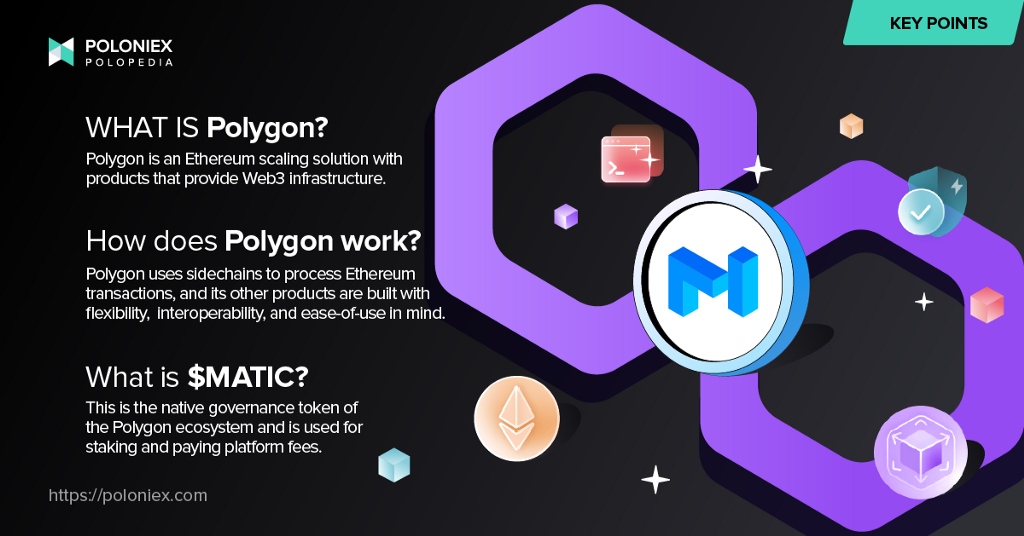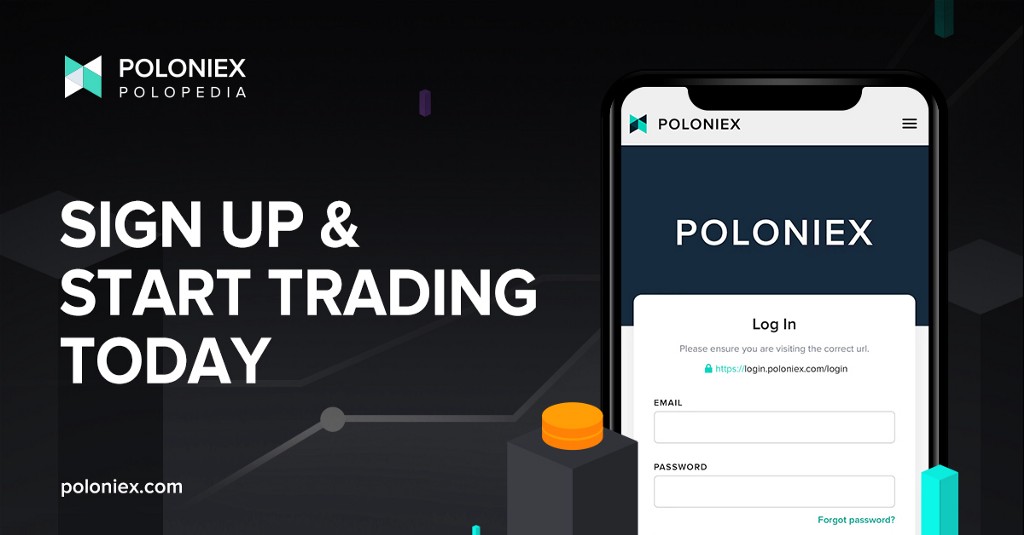
What is Polygon?
Formerly Matic Network, Polygon was founded in India in 2017 with a mission to help scale Ethereum. A layer 2 solution, Polygon addresses the low network throughput of Ethereum’s current Proof-of-Work blockchain by processing them on various sidechains.
When it was rebranded to Polygon, the scaling solution went beyond this with the goal of creating an Ethereum-compatible ecosystem that boasts multi-chain capability. Its technology enables the creation of Ethereum-compatible blockchain networks and facilitates interoperability between multiple other blockchains.
Basically, Polygon is an Ethereum scaling solution that makes sure every product it produces is interoperable, provides the tools that developers need, and plays well with other existing solutions, all while being fast and affordable.
How does Polygon work?
Because Polygon was founded as a scaling solution to Ethereum, it is important to go over (briefly) the problems that the Ethereum network currently faces. Right now, as it is Proof-of-Work, the network’s throughput is quite low: about 14 transactions per second. Because of this, when the network experiences high traffic, it also experiences congestion. And with congestion comes high gas fees, which hurts users and ultimately throttles scaling.
So, exactly how does Polygon solve this? With Polygon’s sidechains, a user deposits ERC20 tokens into a Polygon smart contract. Polygon then mints the same number of tokens on its network. From here the network can handle the transfer of assets with ease and low-cost.
Polygon PoS
Polygon, with its Proof-of-Stake consensus engine, is able to process transactions at a much higher rate, utilizing sidechains to do so. And of course, it is EVM compatible, meaning it can communicate with the Ethereum Virtual Machine, making it easy for developers to deploy on both Polygon and Ethereum. For developers, a solution that is affordable and scalable is very valuable, and Polygon’s PoS product has been thusly utilized by a lot of dApps.
Polygon’s Plasma Bridge, along with its PoS bridge, help assets move from the Ethereum chain to the Polygon chain and back with high speed and negligible fees.
Polygon Supernets
Polygon Supernets provide an infrastructure solution for those wanting to launch their own blockchains. Polygon’s validator partners provide further value by making it easy and available for blockchain devs to access validator sets.
Supernets alleviates the burden of blockchain maintenance and comes in different modes for different needs such as a Shared-security chain and L2 Chain.
Polygon ID
Polygon ID is a blockchain-native identity system with programmable privacy that empowers people and enables the creation of trusted interactions with web3 services.
Polygon ID is Polygon on-chain, Web3 identification system solution, providing a passport for universal identity when interacting with dApps that is based on proving access rights instead of personal identity.
This solution was born out of a call in Web3 against 3rd party data collectors. As such, Polygon ID utilizes *zkSNARK technology, protecting users’ data and identity.
$MATIC and what you can use it for
$MATIC, named after Polygon’s first name, is the project’s native cryptocurrency. As Polygon uses a Proof-of-Stake consensus mechanism, $MATIC is a governance token used for staking. It also is used for paying platform fees and acting as a store-of-value. Besides buying MATIC on exchanges like Poloniex, one can earn it by contributing resources and services to the network.
Polygon’s recent developments and future
Polygon has certainly seen its fair share of achievements recently. Notable among them is a collaboration with Reddit to airdrop collectible avatars. This came via Reddit’s new avatar marketplace which is powered by Polygon.
With Ethereum’s Merge on the horizon, there has been much speculation as to what Polygon’s future might look like. With recent partnerships and newly-forged relationships with tech and entertainment titans, it’s easy to speculate that Polygon has a strong future:
Instagram NFTs
Instagram, much like Reddit (although Reddit has stopped short of calling them NFTs) is using Polygon to power their initiative to make digital collectibles (NFTs) available to display on users accounts. Currently, Polygon and Ethereum are the blockchains on which NFTs can operate to be displayed. Right now, use of this feature is limited, but Instagram and it’s parent company, Meta, have plans to expand access to more users and different blockchains.
https://www.instagram.com/p/CdpOzkZOBQE/
Disney accelerator
In July, news broke that Polygon was among 6 other companies chosen by Disney for its accelerator program as it seeks to develop new technology including AI and augmented reality. Polygon has the distinction of being the only blockchain-based company to be included in the program.
How to acquire $MATIC
MATIC is available on multiple exchanges like Poloniex! You can acquire MATIC through multiple trading pairs: MATIC/BTC | MATIC/TRX | MATIC/USDC | MATIC/USDT
You can also trade MATIC Perpetual Futures with up to 20x (for Level 1 and Level 2 traders).

Feeling ready to get started? Sign-up is easy! Just hop on over to https://poloniex.com/signup/ to start your crypto journey🚀
was originally published in The Poloniex blog on Medium, where people are continuing the conversation by highlighting and responding to this story.

